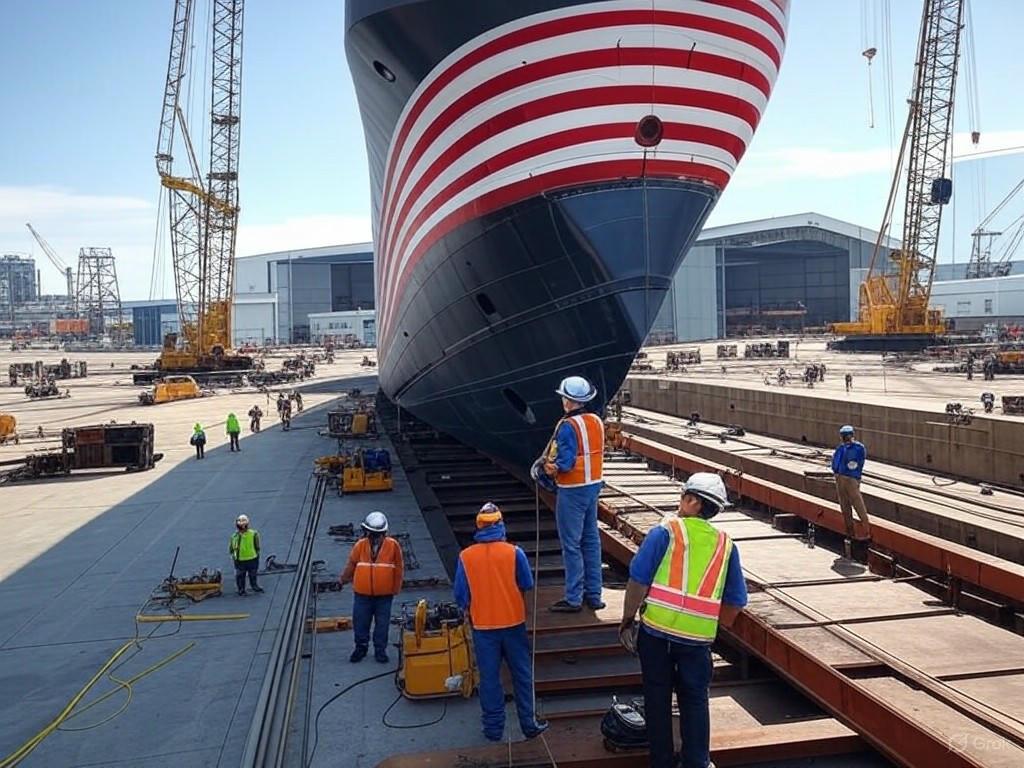The SHIPS for America Act is a bold legislative step that aims to fortify the United States' maritime industry. Introduced with bipartisan support, the act holds significant promise for revamping America's shipping and shipbuilding capacity, particularly in response to China's growing maritime dominance. This article delves into how the SHIPS for America Act seeks to change the landscape of U.S. maritime policy and its implications for the country.
At its core, the SHIPS for America Act is designed to rapidly increase the number of U.S.-flagged vessels. A central feature of this legislation is the establishment of a Strategic Commercial Fleet Program. This initiative aims to bolster the U.S. fleet by adding 250 ships over the next decade. Each of these vessels is expected to be U.S.-built, crewed, and flagged, ensuring readiness not only for commercial purposes but also to meet national defense requirements if needed[1].
Beyond expanding the fleet size, the SHIPS Act takes a comprehensive approach to revitalize the U.S. maritime industry. It introduces tax incentives for domestic shipyard investments and transforms existing financing programs into mechanisms that stimulate innovation in shipbuilding processes. The act proposes significant changes, including the creation of a Maritime Security Trust Fund and a Maritime Security Advisor in the White House. These additions aim to implement and coordinate a national maritime strategy effectively. By doing so, the legislation seeks to streamline regulatory measures and boost competitiveness for U.S.-flagged vessels on the global stage.
Another significant element of the SHIPS for America Act is its focus on workforce development. Acknowledging the critical role of skilled labor in maritime success, the act offers robust investments in training programs. These efforts intend to expand the pool of qualified mariners and shipbuilders. Improving educational infrastructures, such as the U.S. Merchant Marine Academy, also stands as a priority within this legislative framework, further ensuring a strong pipeline of maritime professionals.
In the backdrop of this ambitious legislation, the U.S. finds itself amidst growing geopolitical tensions. The maritime sector is pivotal in this arena, as global trade and security considerations dictate strategic needs. The SHIPS Act directly confronts these challenges by proposing measures that align U.S. policies with its maritime aspirations. It establishes severe penalties for vessels linked to foreign entities of concern, such as China, thus reaffirming America's commitment to secure its maritime interests.
With its far-reaching objectives, the SHIPS for America Act is not merely a national initiative. It has sparked international conversations about maritime policy reforms. The act's potential to reshape the maritime industry globally cannot be understated. It reflects a strategic vision, acknowledging the significance of maritime strength in a world where sea lanes are vital conduits of trade and defense.
The SHIPS for America Act is more than just a legislative effort; it represents a strategic pivot for the U.S., aimed at ensuring ocean-bound influence remains a keystone of national policy. As the act progresses through legislative channels, its success could stand as a pivotal moment for America's maritime future, signaling a robust return to oceanic strength and strategic relevance.
References:
1. Young Kelly Introduce SHIPS for America Act to Boost U.S. Shipbuilding, Counter China







